Age of Empires 4 is coming this fall with asymmetric factions, naval combat, and 4 historical campaigns
I mean it as a compliment when I say Age of Empires 4 looks like Age of Empires 2. It may be 20 years newer and 3D instead of 2D, but one look at the blue splotches on buildings and the peasants working the fields catapulted me back to my old obsession with building armies of Teutonic knights who would lumber across the battlefield like better-dressed Terminators killing anything in their path.
So much time has passed, and other strategy games have evolved and iterated how RTS works.
Creative director Adam Isgreen
"We knew we wanted to make a modern version of Age, but we also wanted to make a game that felt like Age of Empires and would be immediately relatable to the core community," game director Quinn Duffy said at a recent roundtable, where members of the AOE 4 team talked about the game in-depth for the first time.
I got a preview of the Age of Empires fan livestream Microsoft ran this Saturday, which only included a few minutes of AOE 4 in motion and a few hard details.
Three big things fans will want to know about right away: the plan is to launch with eight civilizations (largely from Europe and Asia, but not exclusively), there will be four campaigns tracing the histories of some of those civilizations, and naval combat is in. I would've liked to see a lot more of AOE4, but the short glimpses I got were still enough to pick up on how many changes can fall under the umbrella of modern.
The terrain is gorgeous and takes full advantage of being 3D, with dramatic cliffs and hills that will give an advantage in combat. Units in each civilization now speak their own native tongue—or, rather, tongues. "Playing a civ like the English, they start off and are very hard to understand in the first age. By the time you hit age four they're actually speaking Old English and you can understand what the units are saying," said creative director Adam Isgreen. "Instead of doing any kind of translation, when you play the Chinese, you're going to learn some Chinese, because your units are all going to be talking to you in that language. That goes for all the languages and cultures in the game."
Each civilization's musical theme will become more complex and layered as you advance. The whole world will even become more vibrant and saturated as you progress out of the dark ages and approach the Renaissance.
Age of Empires 2 was a great looking RTS for its time, and I still love its dense isometric art, but I think I'll probably lose my first Age of Empires 4 match by spending too long at maximum zoom, admiring the details on each building.
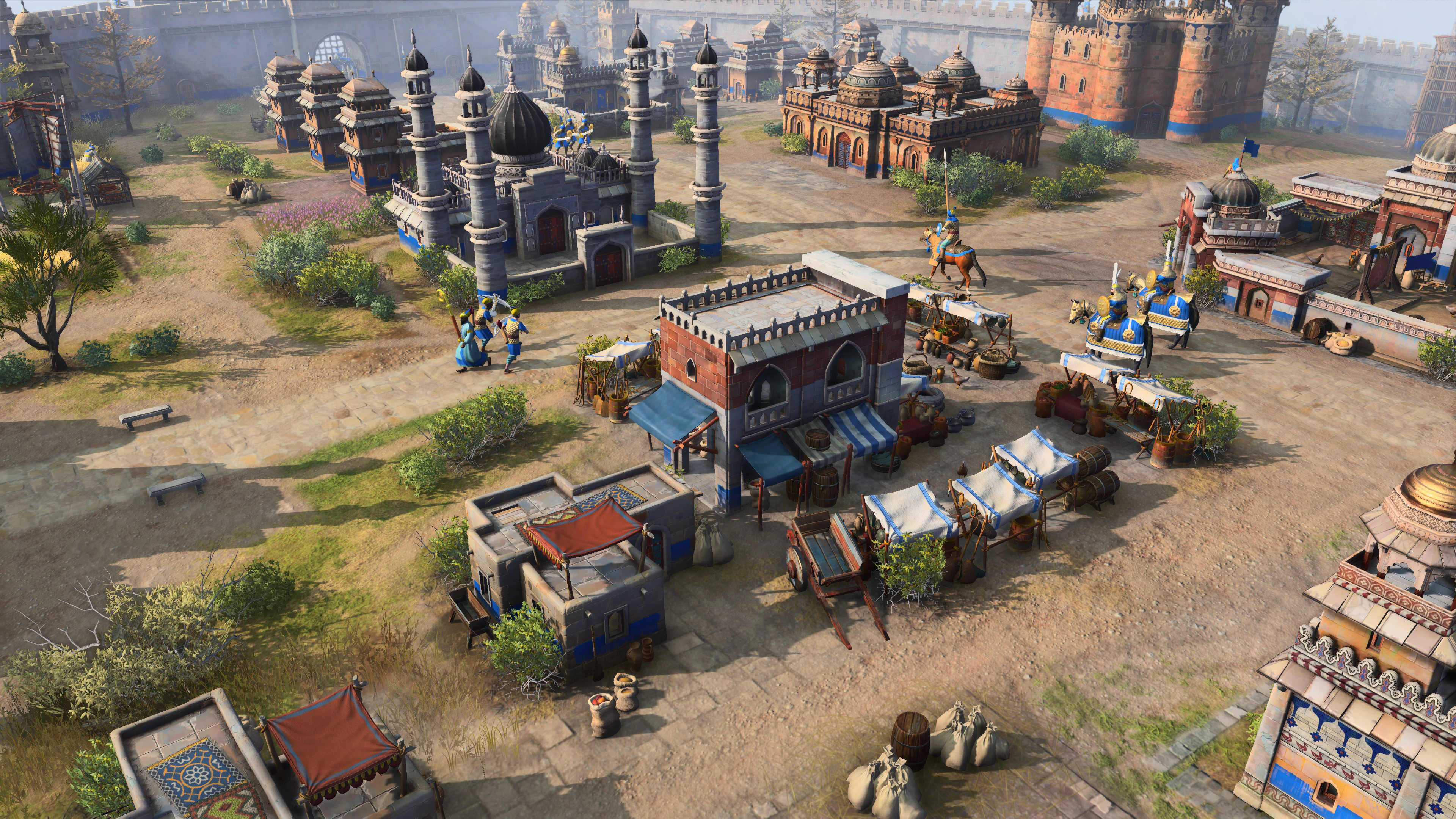
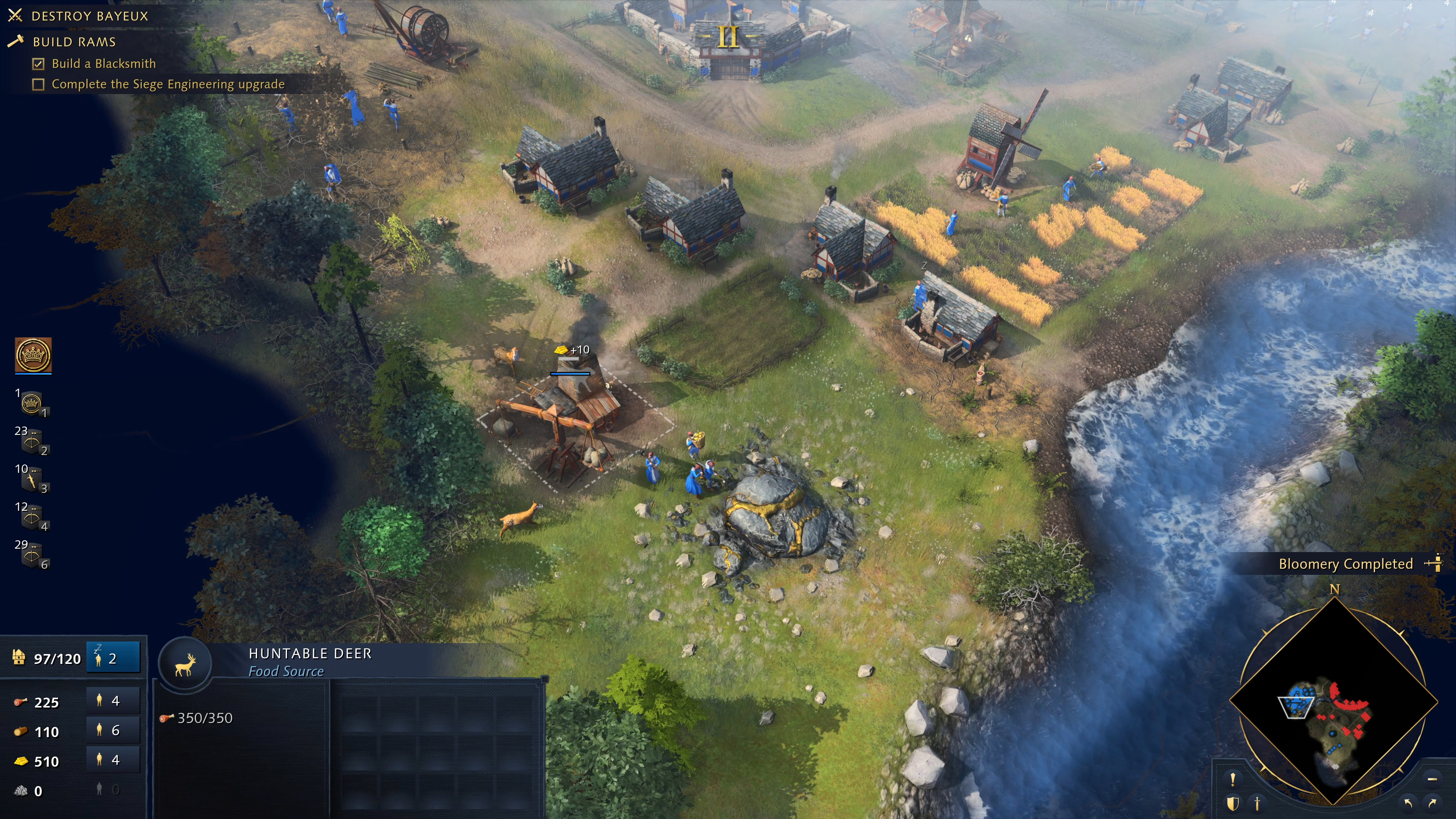
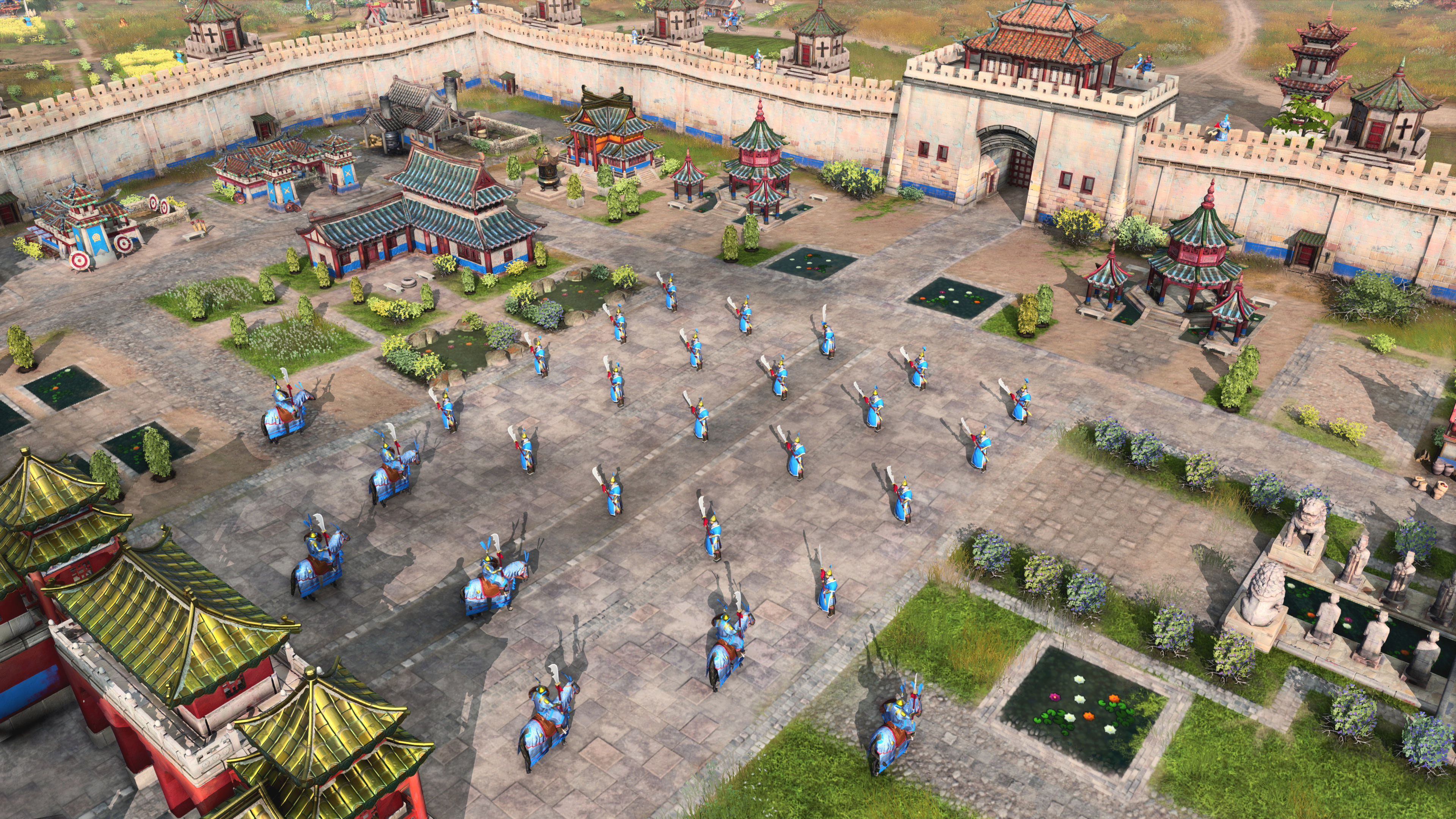
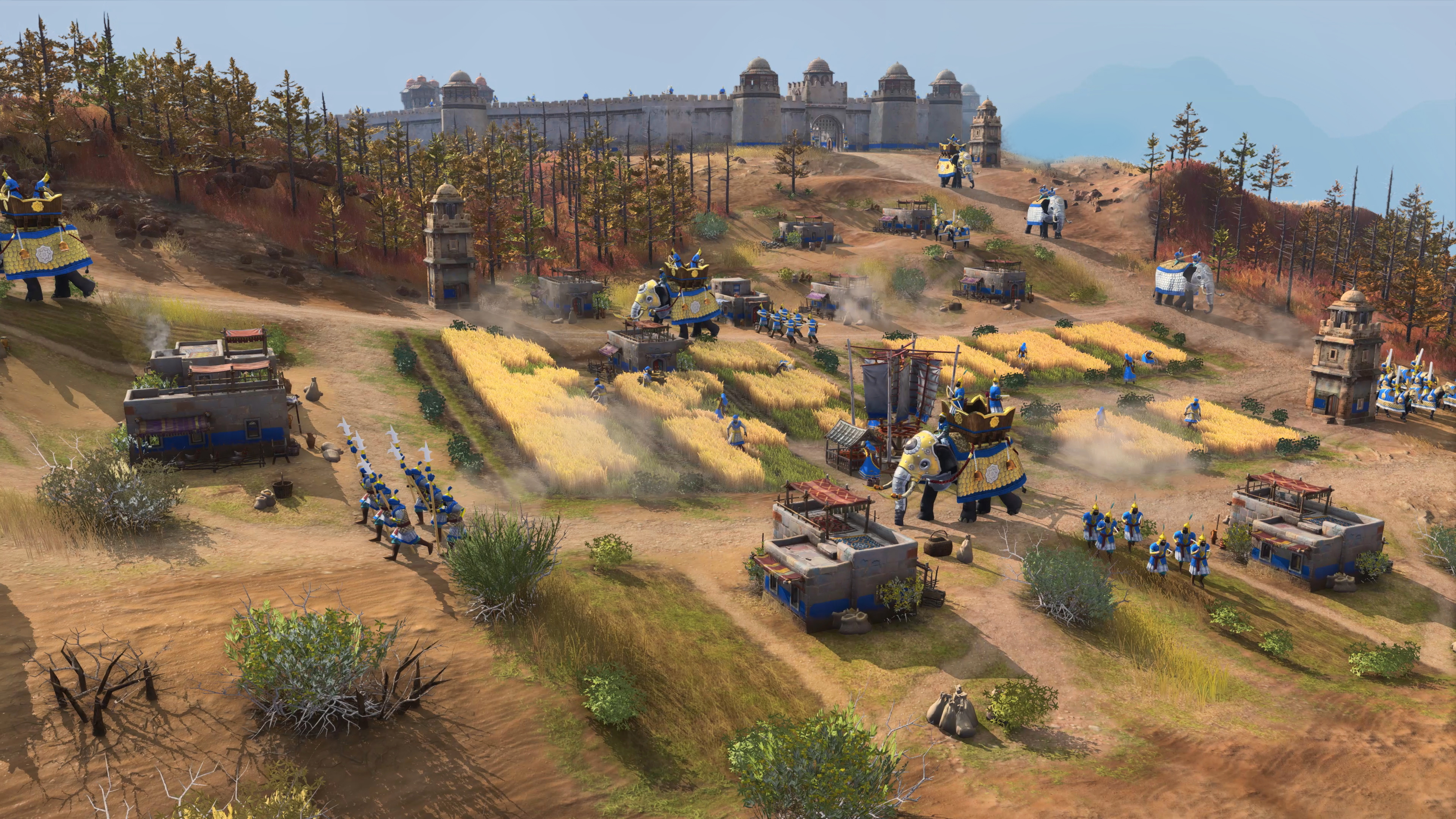
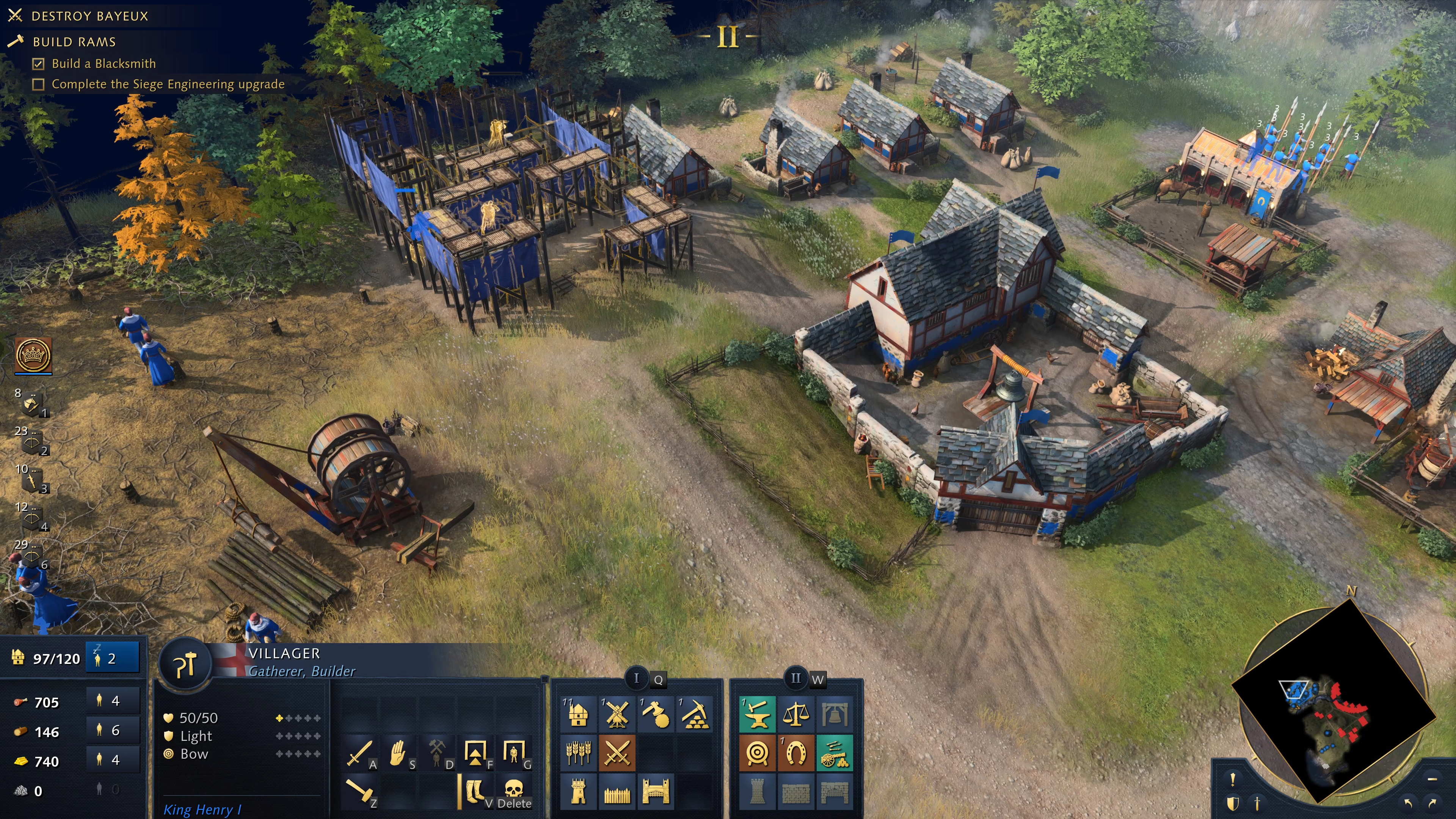
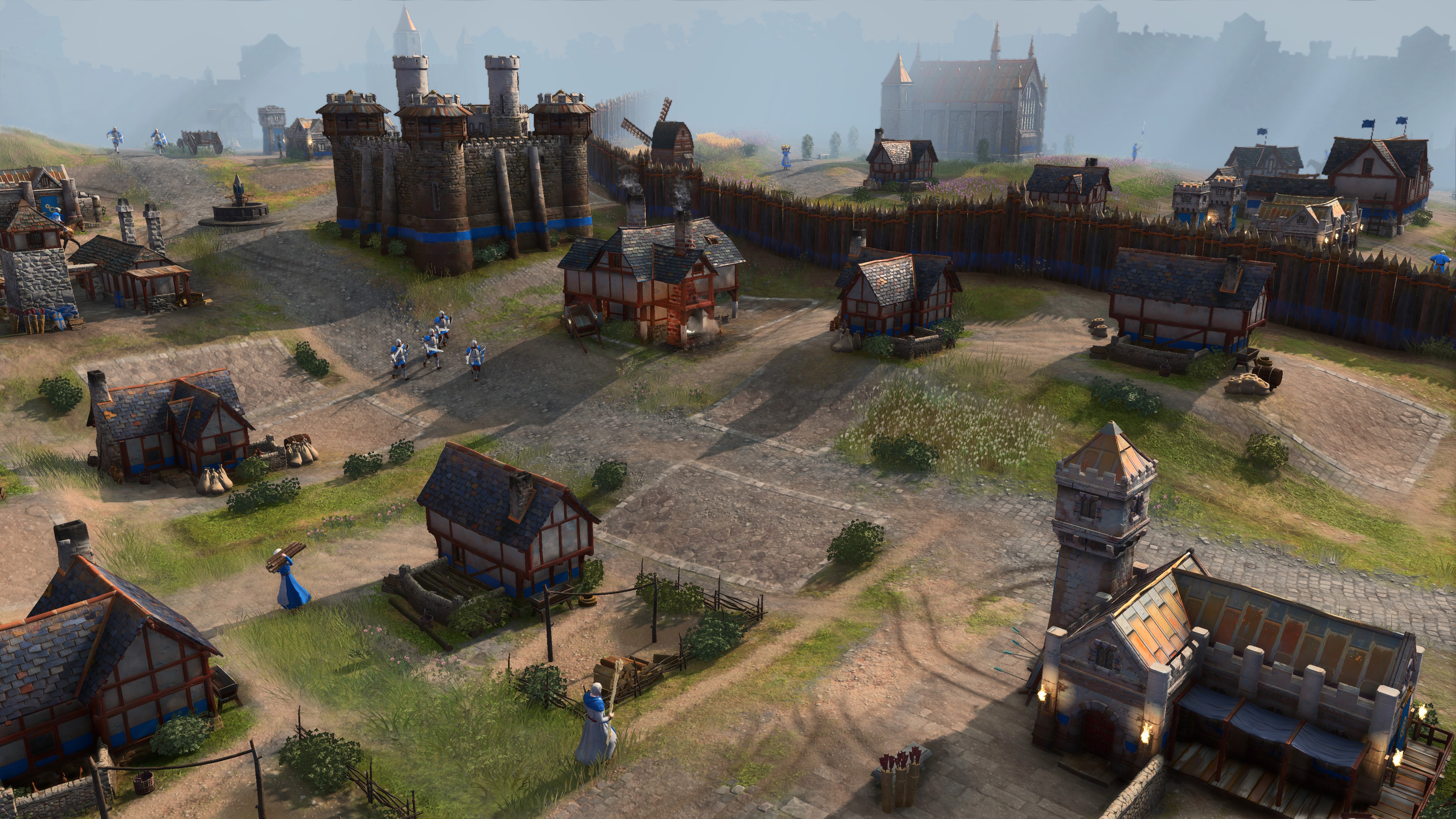
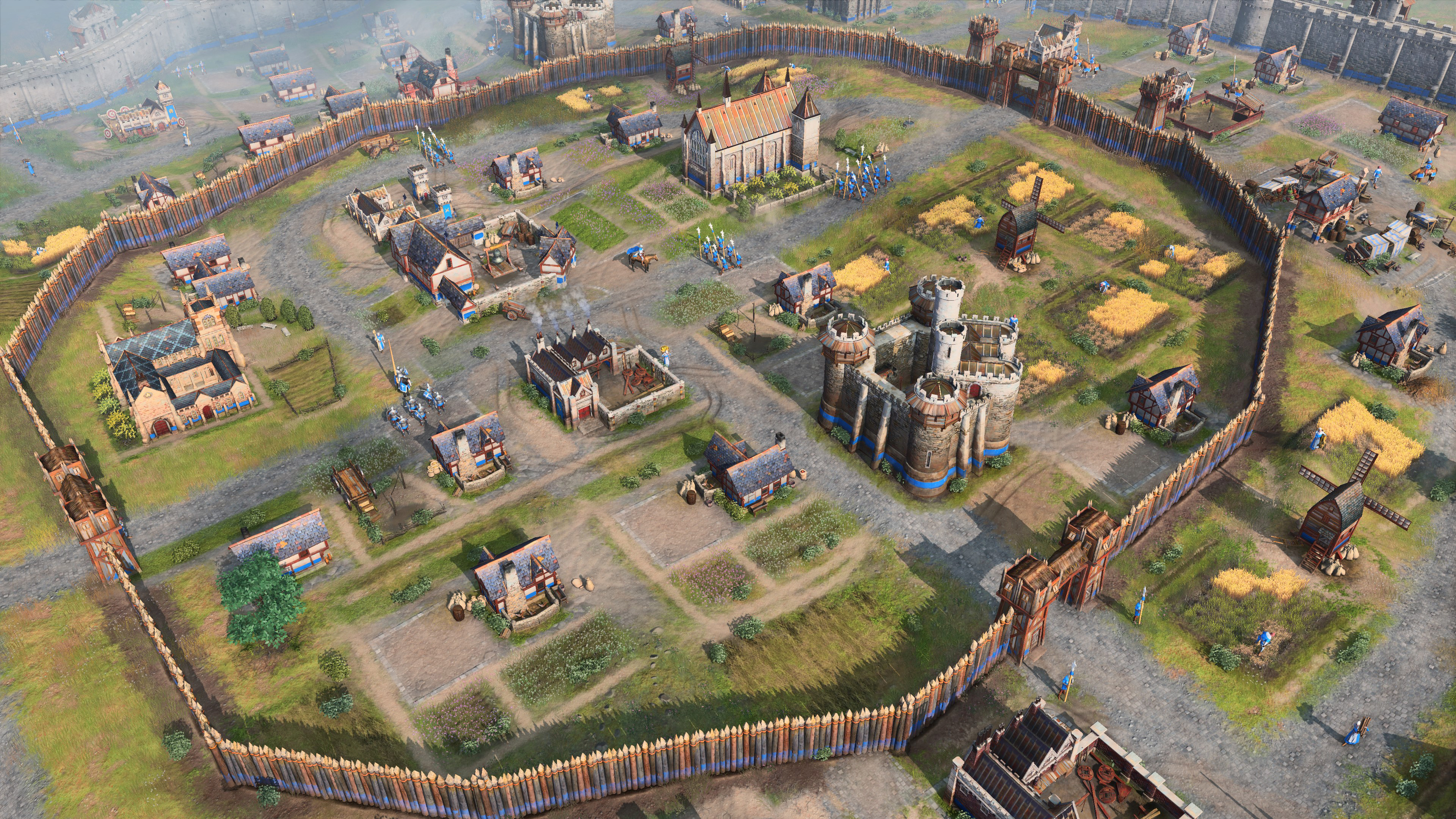
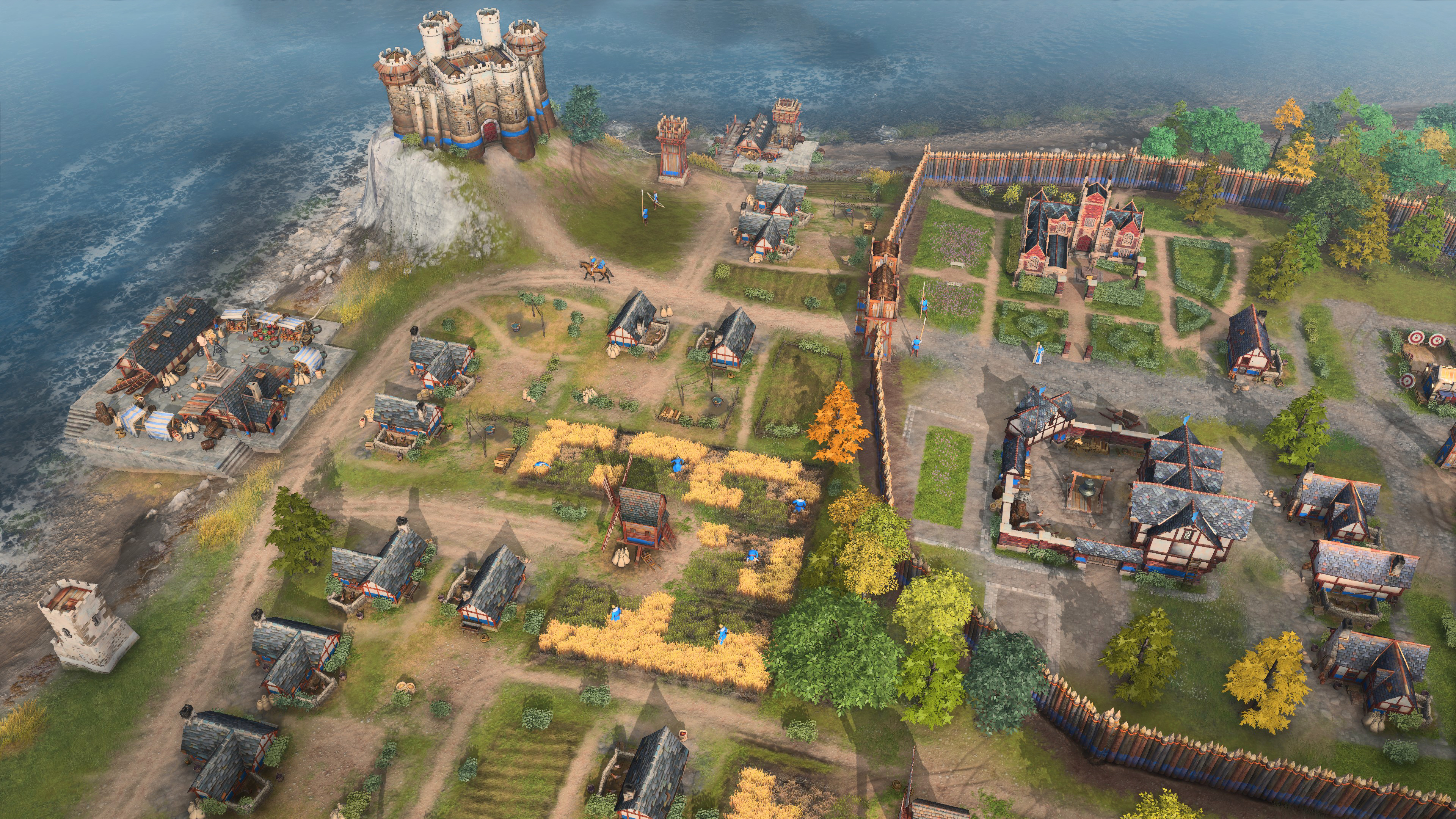
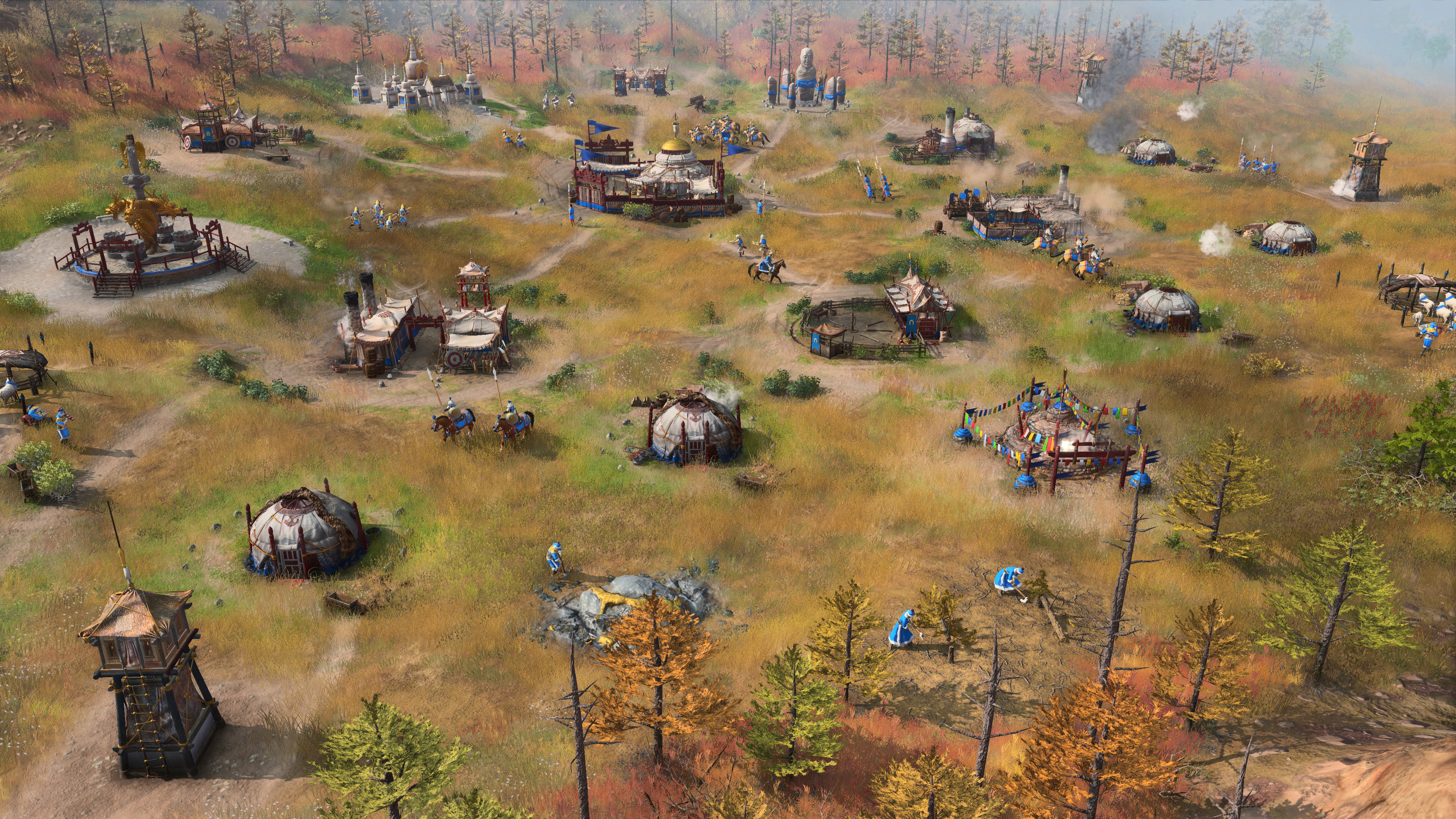
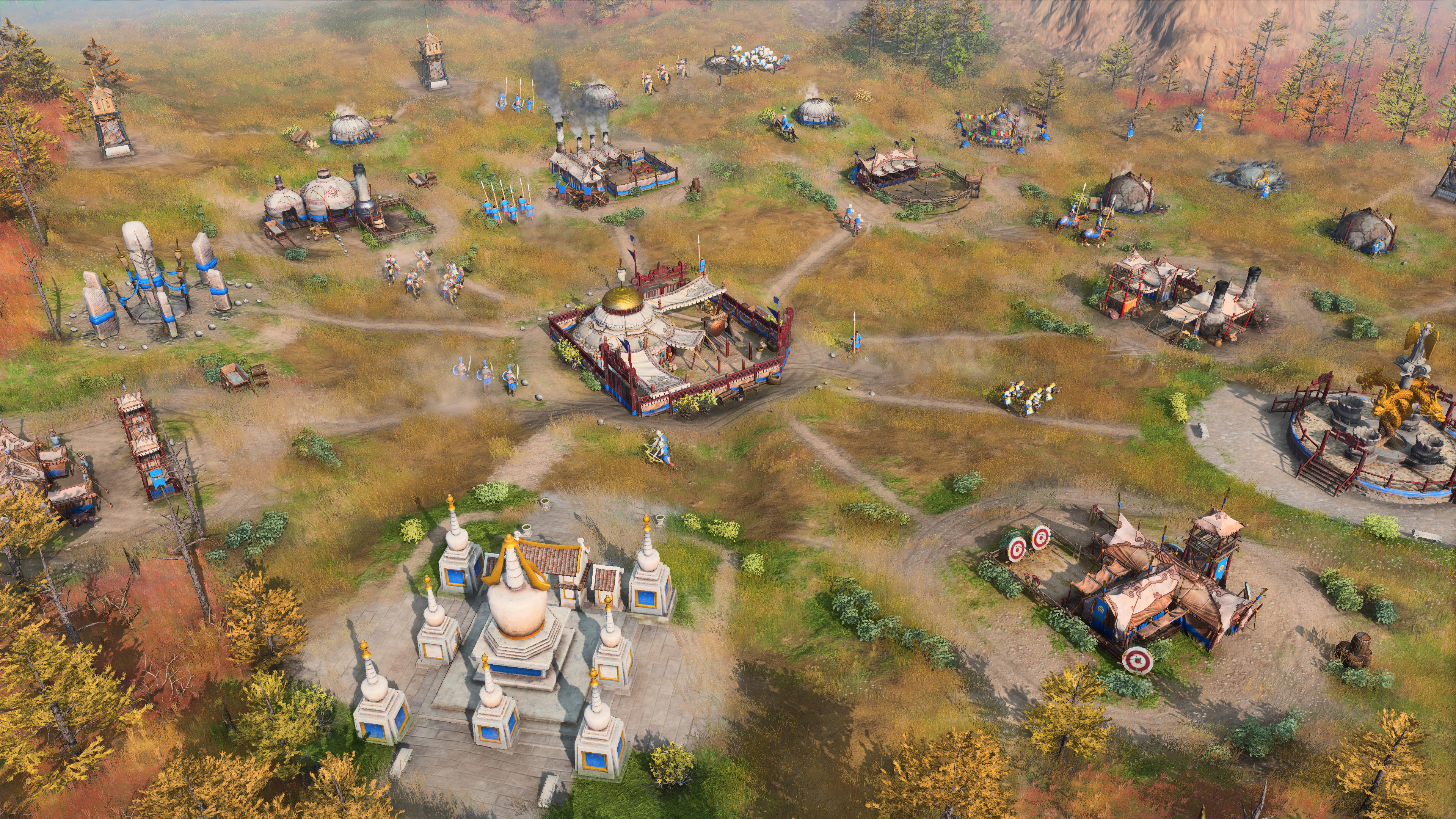
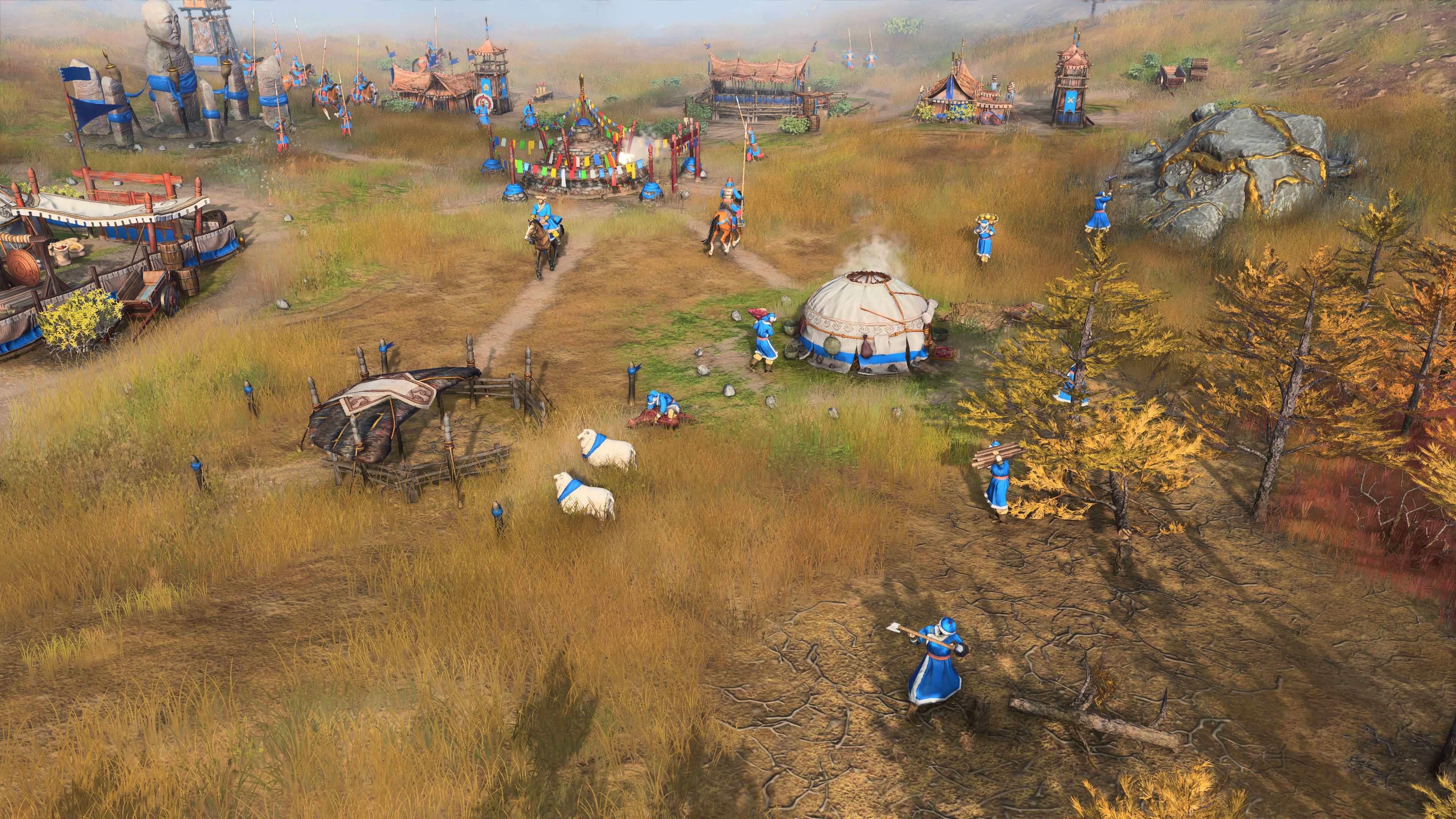
"Houses are different from each age," art director Zach Schlappi said. "The modeling actually changes, the textures change. It reflects the narrative: In age one you have almost primitive-looking buildings and structures using very basic materials. As you go through ages one, two, three, four, these buildings grow and become more elaborate and more decorative, reflecting the technological refinements of each civ."
There are still generic units shared between factions, because AOE4's developers decided to retain the triangle of cavalry, ranged units, and pikemen core to series' combat. But, broadly, civilizations are more distinct from one another, or, as game designers love to say, "asymmetrical." The Mongols, for example, can pack up all their buildings and move them, something the English aren't about to do with a stone castle. During the roundtable I also got quick looks at the Chinese and Delhi Sultanate, the other two confirmed civilizations. Each has its own aesthetic, down to the architecture and clothes on workers in the fields.
"So much time has passed, and other strategy games have evolved and iterated how RTS works," said Isgreen. He pointed to some major additions in Age 4, like units being able to hide in forests to pull off ambushes. Units can now man the walls around a city to fight off attacks, making sieges more complex and suitably dramatic.
Empires at war
Starting with eight [civs] is a big endeavor, and then we're going to keep expanding
Adam Isgreen
After spending much of the last decade playing games in the Total War series, though, Age of Empires still looks like a throwback to me. Total War's battles let you bring in thousands of troops and play at something resembling real strategy—just getting the high ground and being able to charge your spearmen downhill instead of up can make a huge difference. The scale of Total War is on another level. In Age of Empires 4, a unit of pikemen looks like three men instead of 100, and cavalry seem to gallop up to an infantry line and then sit there dueling instead of smashing through it in a realistic show of physics.
Total War's combat definitely leans towards simulation, and Age of Empires 4 probably isn't trying to be that. I don't think it has to be, but I wonder how different its battles will feel from old real-time strategy games, which have fallen out of fashion in the last decade. Maybe the fidelity will be enough to make AOE4 captivating—there's a special feeling that RTS games can give you when they look this beautiful, as if you're a god marveling at all of creation from above (and occasionally reaching down to make the tiny people do your bidding).
Total War does have giant battles, but otherwise I don't think it has much of what makes Age of Empires so fun: creating a city building-by-building, watching it come to life, and encircling it with an immense wall. Sending scouts into enemy camps to torment their peasants. The increasing challenge of juggling a growing city and army that you only get in real time. You can't turtle up in Total War, but there was nothing better than turtling behind a wall in Age of Empires and chewing your way through the tech tree.
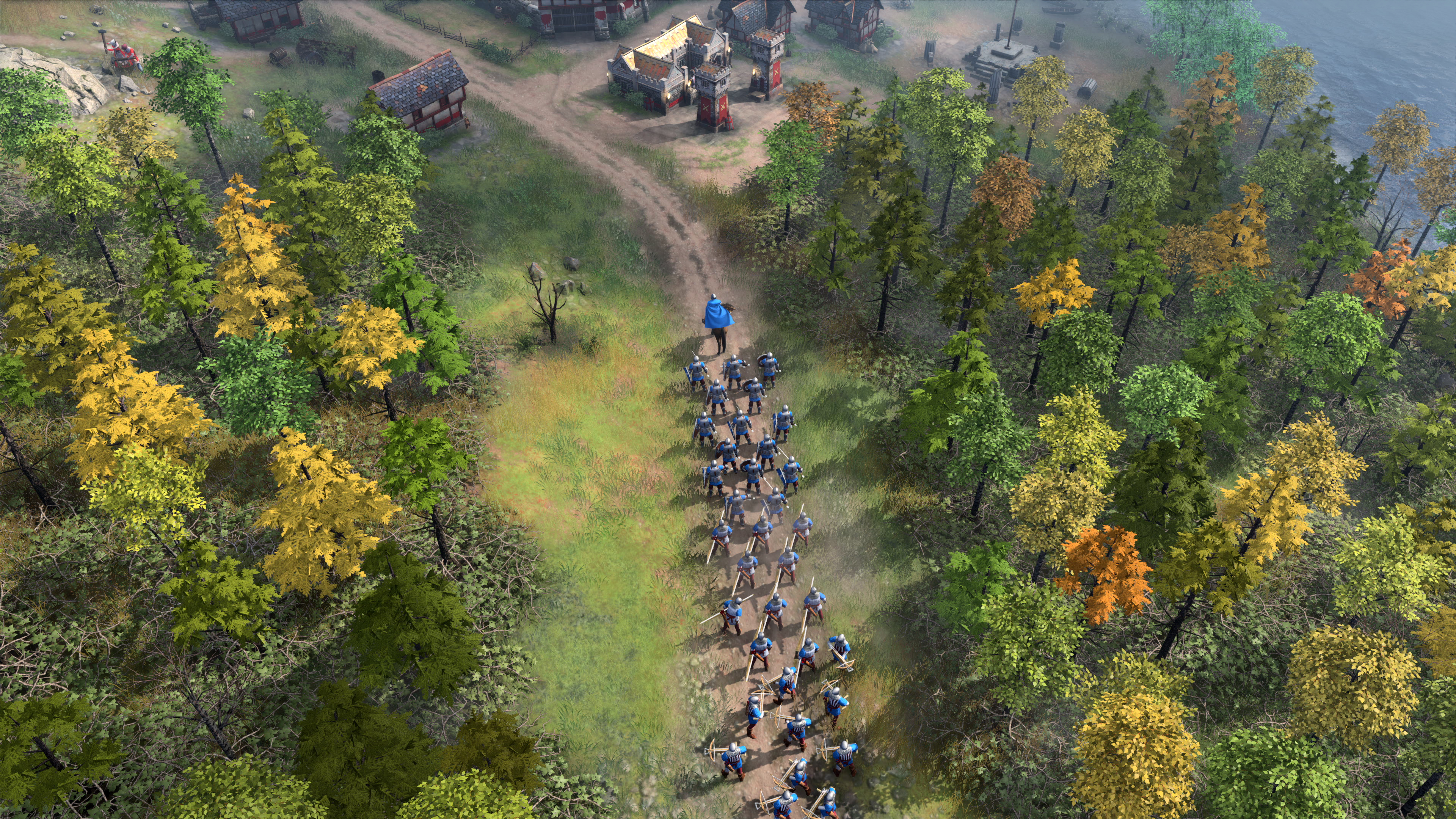
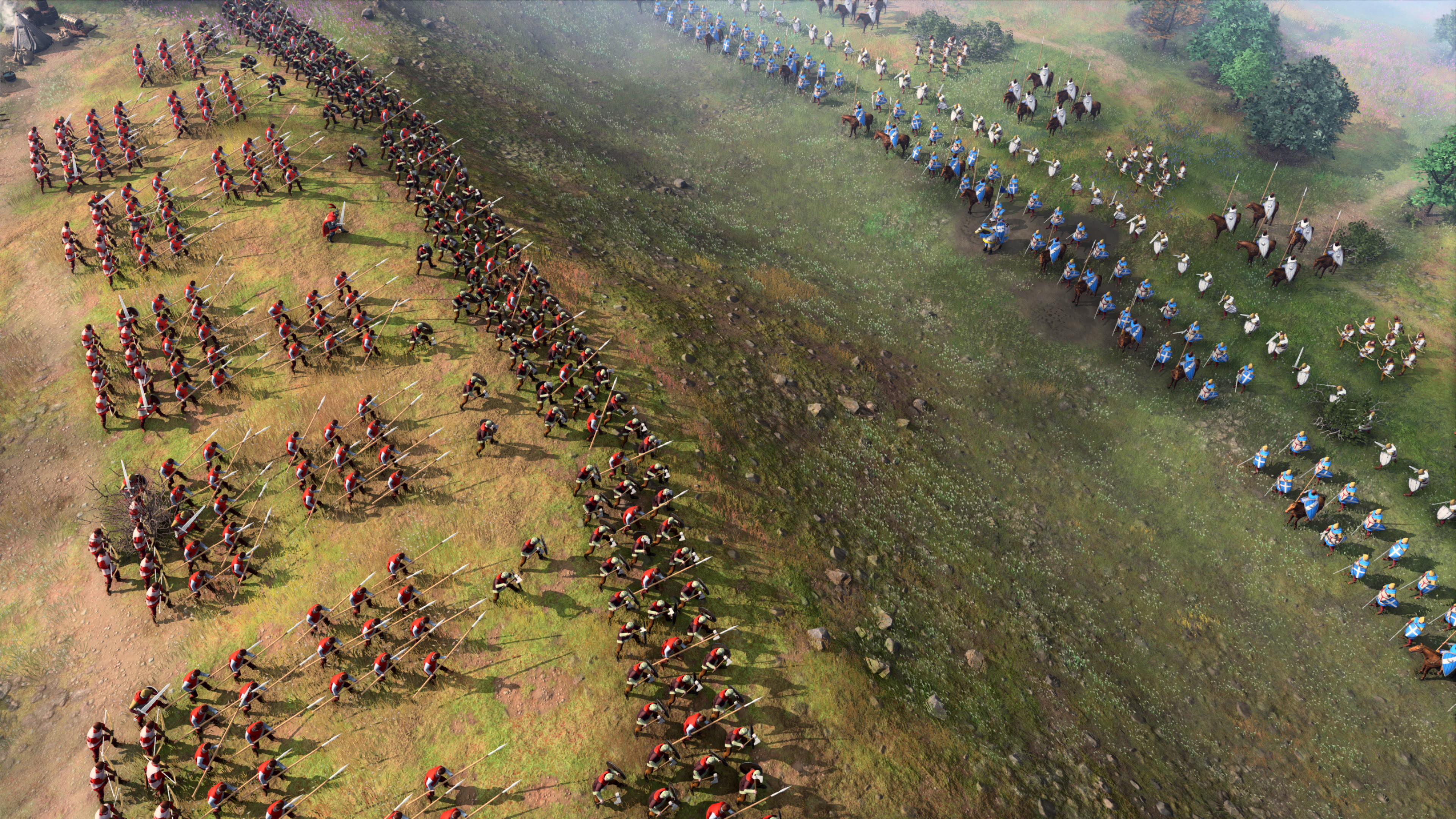
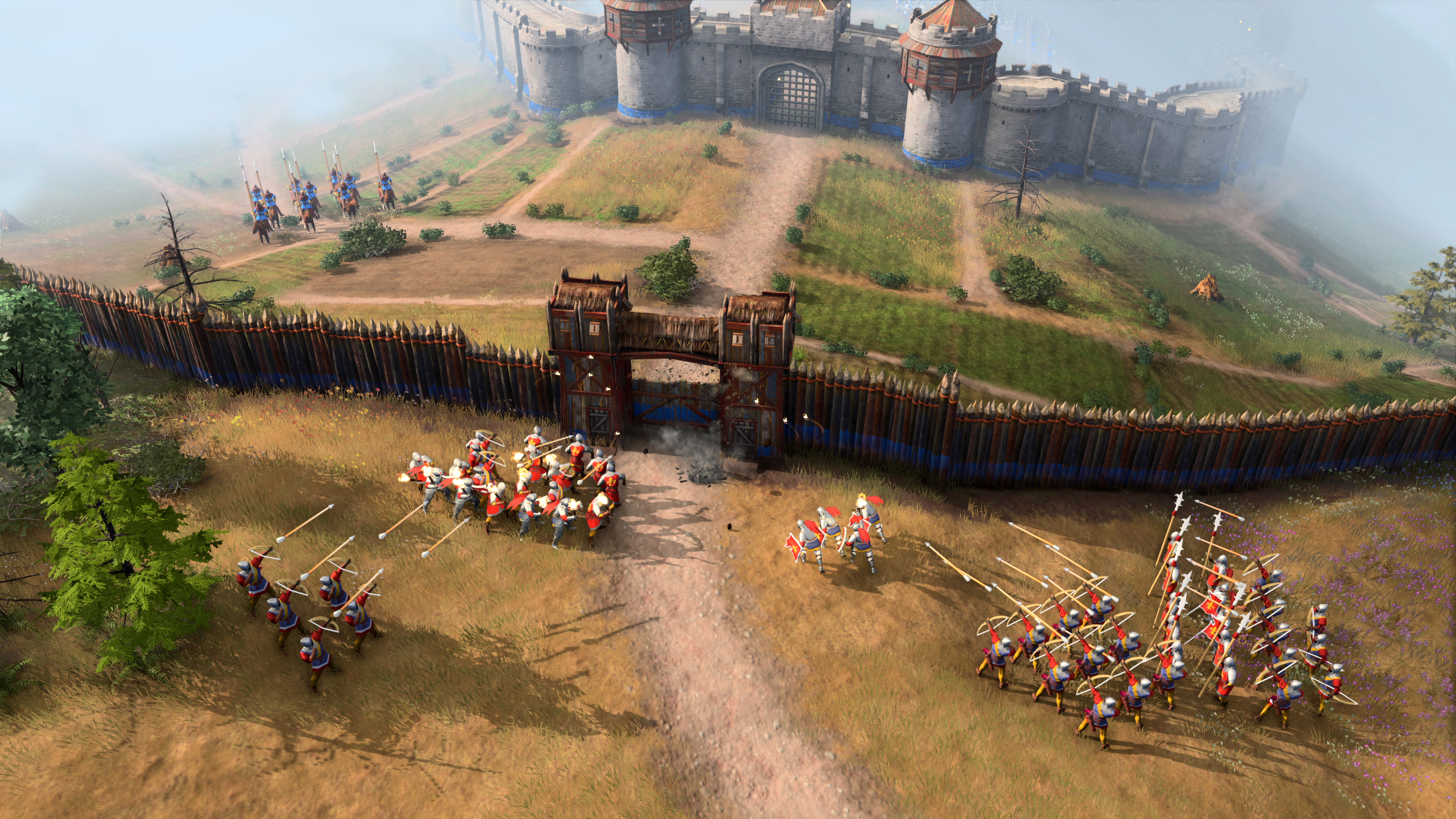
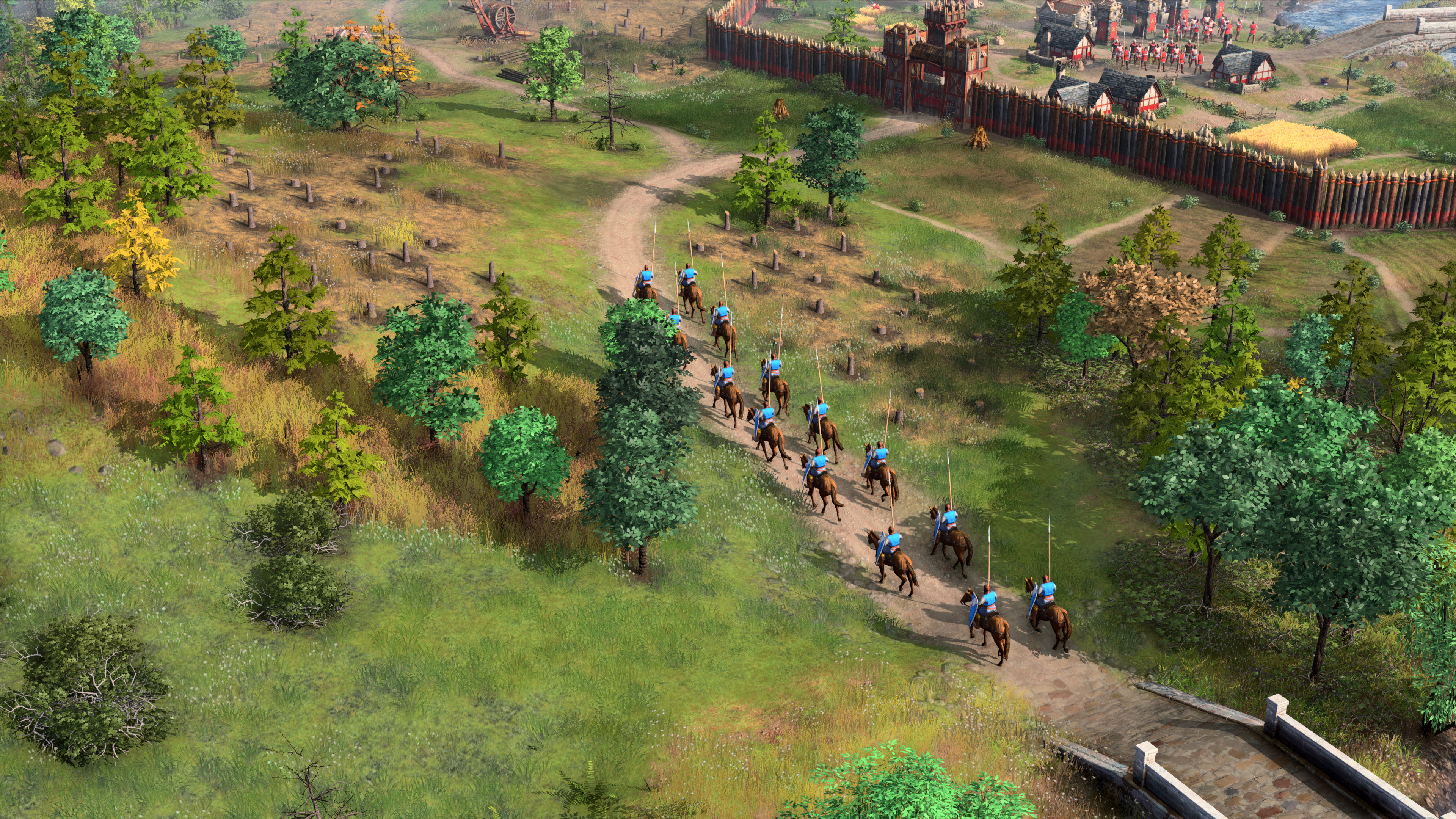
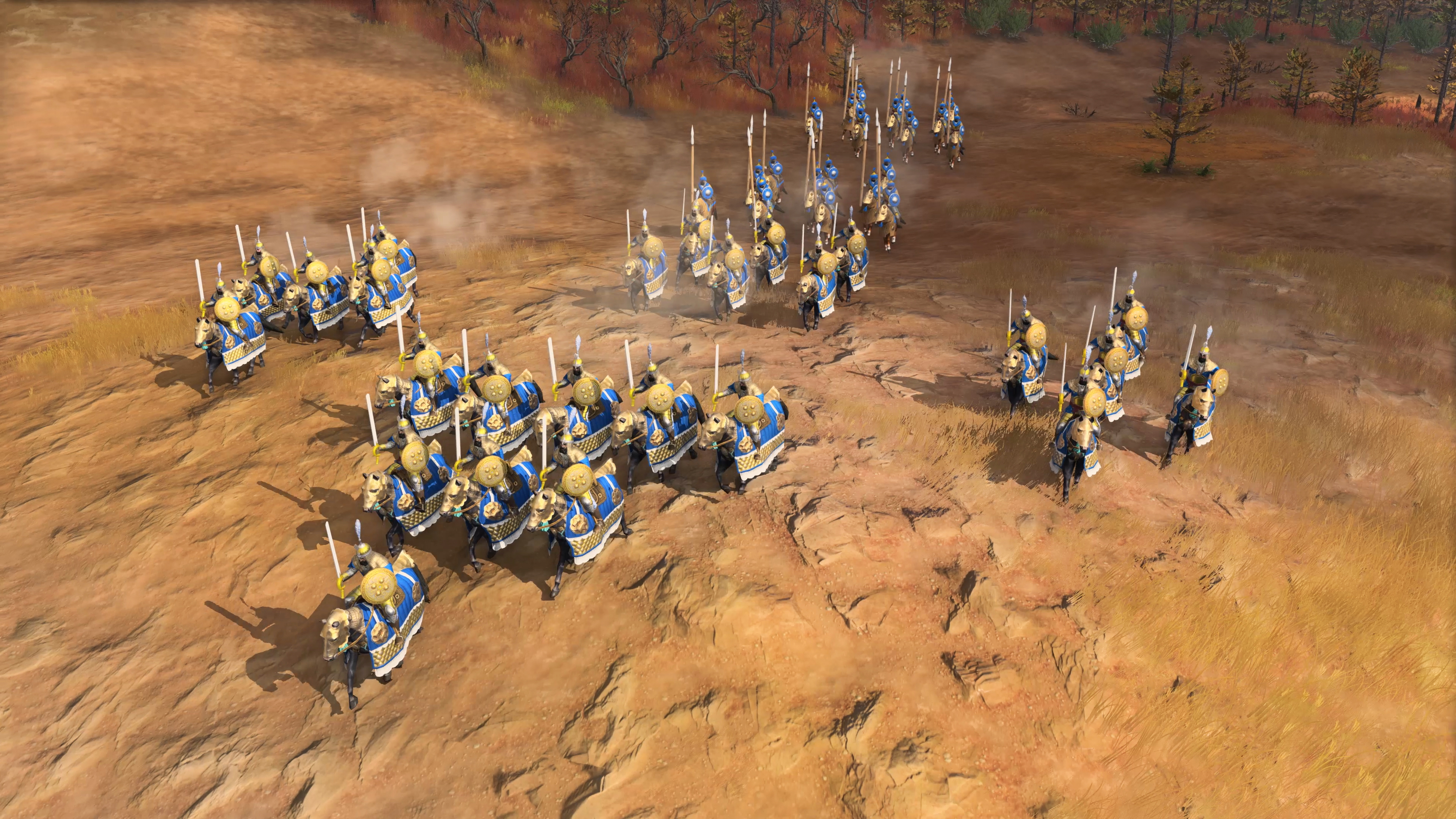
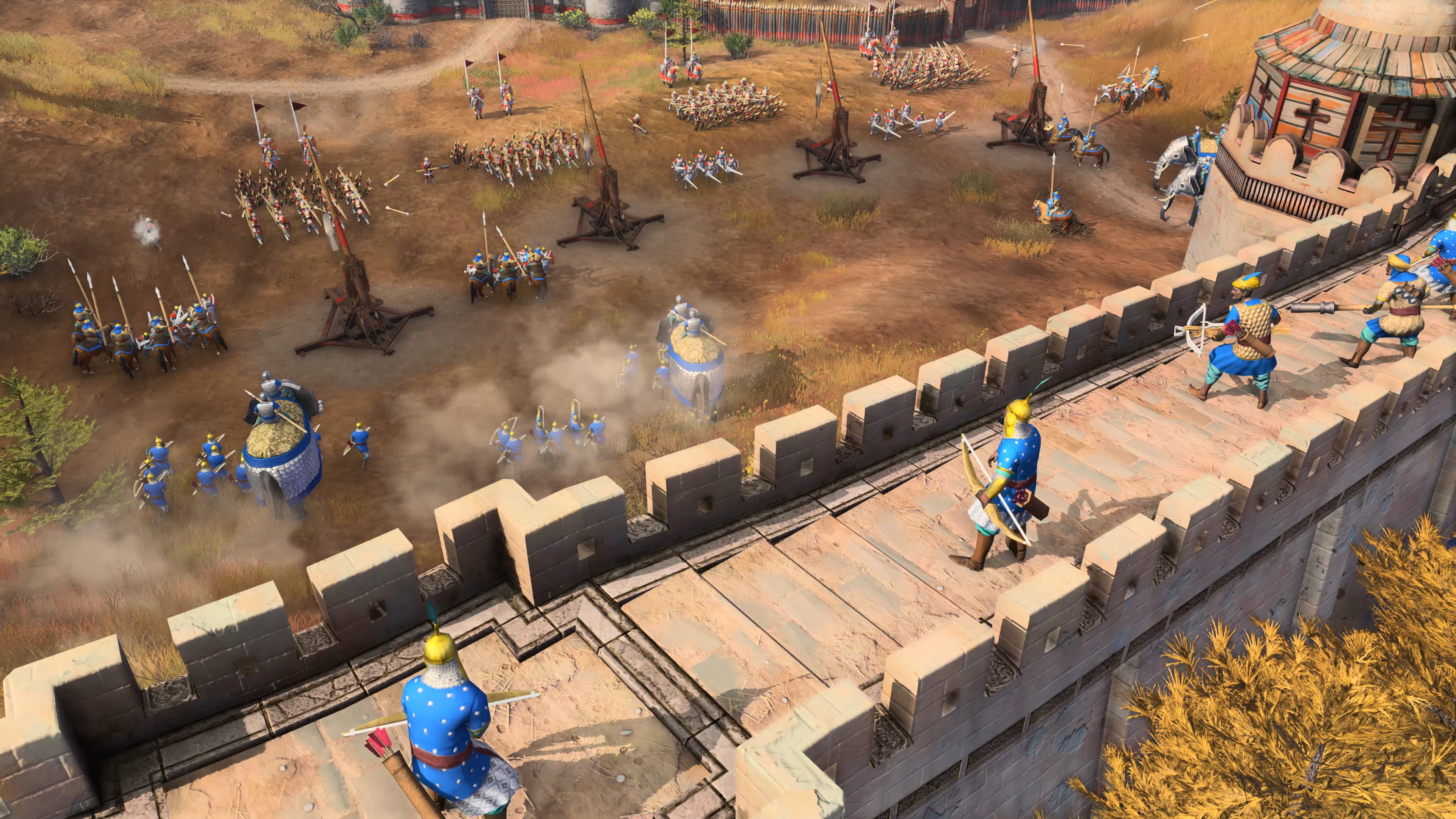

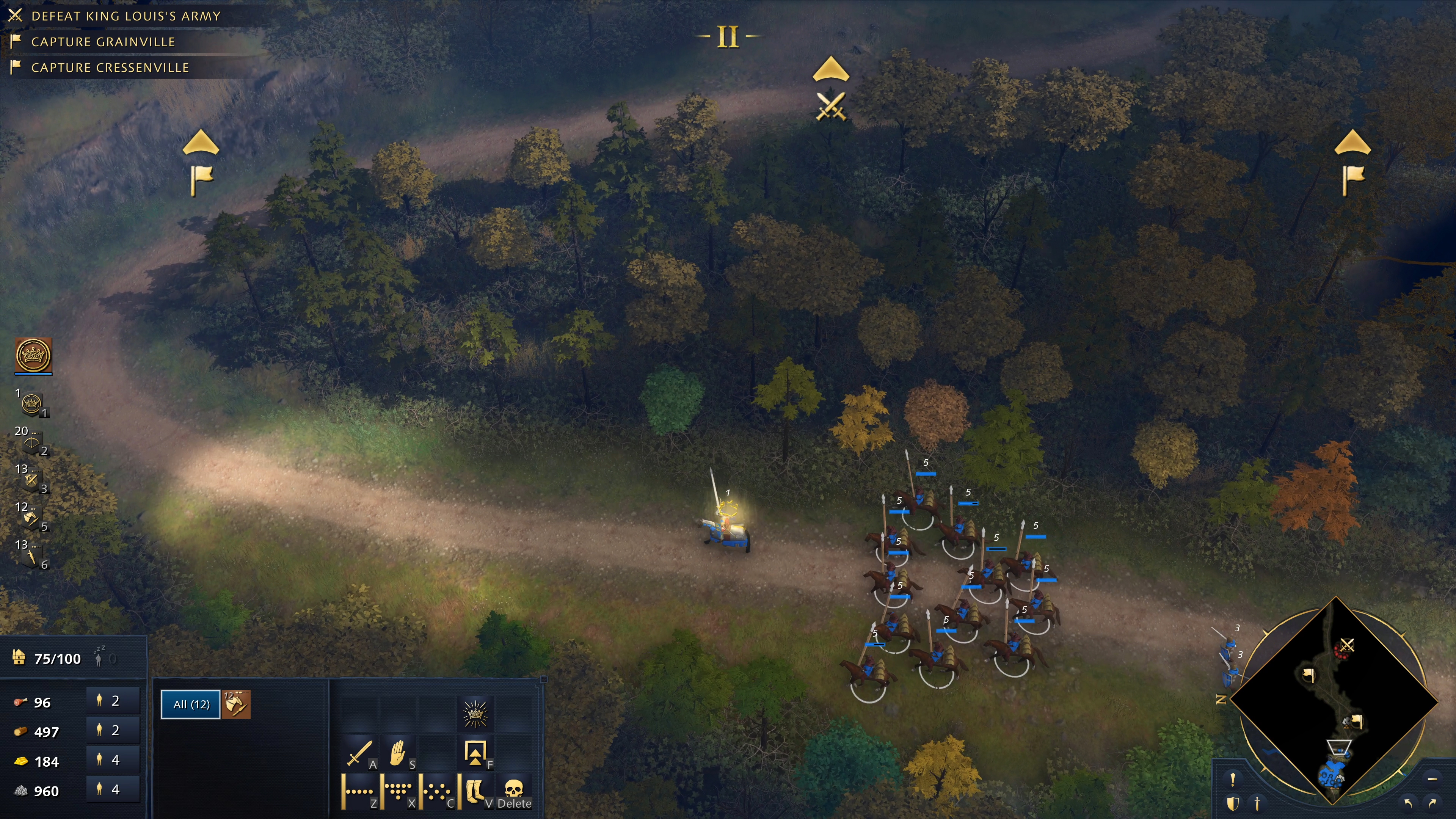
The asymmetry between civilizations is what tantalizes me most. The developers held back most specific details, but I did learn that civs will get different bonuses for building cities and landmarks, on top of tweaks to basic systems like trade, research, and production. There are also outright unique features and units, like the Sultanate's war elephants. Where the English are meant to be "comfortable" and familiar, the Mongols and some yet-to-be-named civs "really push the boundaries of what Age of Empires has done before in terms of how your civilizations play," said Isgreen.
"[Eight civilizations] is where we're starting. The detail we're putting into the civilizations and the focus on making them more unique—you can imagine there's a reason StarCraft had three factions the entire time, because doing asymmetrical balance gets massively complicated. For us, starting with eight is a big endeavor, and then we're going to keep expanding."
Age of Empires 4's four planned campaigns also sound ambitious: instead of focusing on individual historical figures they'll tackle a longer view of the civilization's history. The Norman campaign begins with William the Conqueror, then moves to the conflict between his children Henry I and Robert II, and then their children, and then their children, over the course of more than a century.
"You get the whole story of the Norman conquest, from the time this ambitious duke made his way across the channel and said 'this is mine,' all the way to the point where you're signing the Magna Carta and laying the foundations of what England is today," said narrative lead Philippe Boulle. "We bridge the gap between missions with these wonderful historical films. We worked with documentarians to go to all kinds of locations like Hastings and Dover, where these events happened. And that's just one of the four campaigns we're shipping with."
Four years after it was announced, Age of Empires 4 is finally out in fall 2021, but it should be playable sooner—a closed beta is on the way before launch.
from PCGamer latest https://ift.tt/3a2t6cT
I mean it as a compliment when I say Age of Empires 4 looks like Age of Empires 2. It may be 20 years newer and 3D instead of 2D, but one look at the blue splotches on buildings and the peasants working the fields catapulted me back to my old obsession with building armies of Teutonic knights who would lumber across the battlefield like better-dressed Terminators killing anything in their path.
So much time has passed, and other strategy games have evolved and iterated how RTS works.
Creative director Adam Isgreen
"We knew we wanted to make a modern version of Age, but we also wanted to make a game that felt like Age of Empires and would be immediately relatable to the core community," game director Quinn Duffy said at a recent roundtable, where members of the AOE 4 team talked about the game in-depth for the first time.
I got a preview of the Age of Empires fan livestream Microsoft ran this Saturday, which only included a few minutes of AOE 4 in motion and a few hard details.
Three big things fans will want to know about right away: the plan is to launch with eight civilizations (largely from Europe and Asia, but not exclusively), there will be four campaigns tracing the histories of some of those civilizations, and naval combat is in. I would've liked to see a lot more of AOE4, but the short glimpses I got were still enough to pick up on how many changes can fall under the umbrella of modern.
The terrain is gorgeous and takes full advantage of being 3D, with dramatic cliffs and hills that will give an advantage in combat. Units in each civilization now speak their own native tongue—or, rather, tongues. "Playing a civ like the English, they start off and are very hard to understand in the first age. By the time you hit age four they're actually speaking Old English and you can understand what the units are saying," said creative director Adam Isgreen. "Instead of doing any kind of translation, when you play the Chinese, you're going to learn some Chinese, because your units are all going to be talking to you in that language. That goes for all the languages and cultures in the game."
Each civilization's musical theme will become more complex and layered as you advance. The whole world will even become more vibrant and saturated as you progress out of the dark ages and approach the Renaissance.
Age of Empires 2 was a great looking RTS for its time, and I still love its dense isometric art, but I think I'll probably lose my first Age of Empires 4 match by spending too long at maximum zoom, admiring the details on each building.











"Houses are different from each age," art director Zach Schlappi said. "The modeling actually changes, the textures change. It reflects the narrative: In age one you have almost primitive-looking buildings and structures using very basic materials. As you go through ages one, two, three, four, these buildings grow and become more elaborate and more decorative, reflecting the technological refinements of each civ."
There are still generic units shared between factions, because AOE4's developers decided to retain the triangle of cavalry, ranged units, and pikemen core to series' combat. But, broadly, civilizations are more distinct from one another, or, as game designers love to say, "asymmetrical." The Mongols, for example, can pack up all their buildings and move them, something the English aren't about to do with a stone castle. During the roundtable I also got quick looks at the Chinese and Delhi Sultanate, the other two confirmed civilizations. Each has its own aesthetic, down to the architecture and clothes on workers in the fields.
"So much time has passed, and other strategy games have evolved and iterated how RTS works," said Isgreen. He pointed to some major additions in Age 4, like units being able to hide in forests to pull off ambushes. Units can now man the walls around a city to fight off attacks, making sieges more complex and suitably dramatic.
Empires at war
Starting with eight [civs] is a big endeavor, and then we're going to keep expanding
Adam Isgreen
After spending much of the last decade playing games in the Total War series, though, Age of Empires still looks like a throwback to me. Total War's battles let you bring in thousands of troops and play at something resembling real strategy—just getting the high ground and being able to charge your spearmen downhill instead of up can make a huge difference. The scale of Total War is on another level. In Age of Empires 4, a unit of pikemen looks like three men instead of 100, and cavalry seem to gallop up to an infantry line and then sit there dueling instead of smashing through it in a realistic show of physics.
Total War's combat definitely leans towards simulation, and Age of Empires 4 probably isn't trying to be that. I don't think it has to be, but I wonder how different its battles will feel from old real-time strategy games, which have fallen out of fashion in the last decade. Maybe the fidelity will be enough to make AOE4 captivating—there's a special feeling that RTS games can give you when they look this beautiful, as if you're a god marveling at all of creation from above (and occasionally reaching down to make the tiny people do your bidding).
Total War does have giant battles, but otherwise I don't think it has much of what makes Age of Empires so fun: creating a city building-by-building, watching it come to life, and encircling it with an immense wall. Sending scouts into enemy camps to torment their peasants. The increasing challenge of juggling a growing city and army that you only get in real time. You can't turtle up in Total War, but there was nothing better than turtling behind a wall in Age of Empires and chewing your way through the tech tree.








The asymmetry between civilizations is what tantalizes me most. The developers held back most specific details, but I did learn that civs will get different bonuses for building cities and landmarks, on top of tweaks to basic systems like trade, research, and production. There are also outright unique features and units, like the Sultanate's war elephants. Where the English are meant to be "comfortable" and familiar, the Mongols and some yet-to-be-named civs "really push the boundaries of what Age of Empires has done before in terms of how your civilizations play," said Isgreen.
"[Eight civilizations] is where we're starting. The detail we're putting into the civilizations and the focus on making them more unique—you can imagine there's a reason StarCraft had three factions the entire time, because doing asymmetrical balance gets massively complicated. For us, starting with eight is a big endeavor, and then we're going to keep expanding."
Age of Empires 4's four planned campaigns also sound ambitious: instead of focusing on individual historical figures they'll tackle a longer view of the civilization's history. The Norman campaign begins with William the Conqueror, then moves to the conflict between his children Henry I and Robert II, and then their children, and then their children, over the course of more than a century.
"You get the whole story of the Norman conquest, from the time this ambitious duke made his way across the channel and said 'this is mine,' all the way to the point where you're signing the Magna Carta and laying the foundations of what England is today," said narrative lead Philippe Boulle. "We bridge the gap between missions with these wonderful historical films. We worked with documentarians to go to all kinds of locations like Hastings and Dover, where these events happened. And that's just one of the four campaigns we're shipping with."
Four years after it was announced, Age of Empires 4 is finally out in fall 2021, but it should be playable sooner—a closed beta is on the way before launch.
via IFTTT

Post a Comment